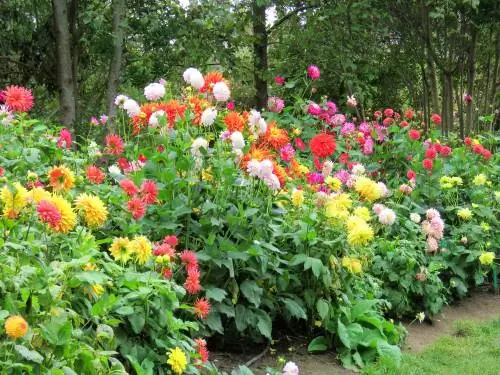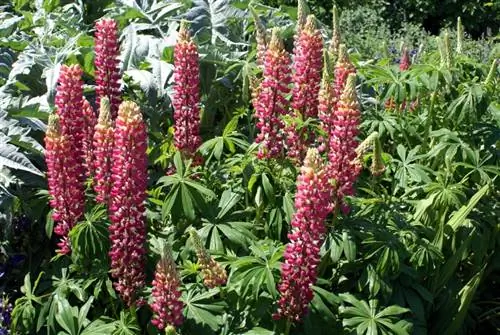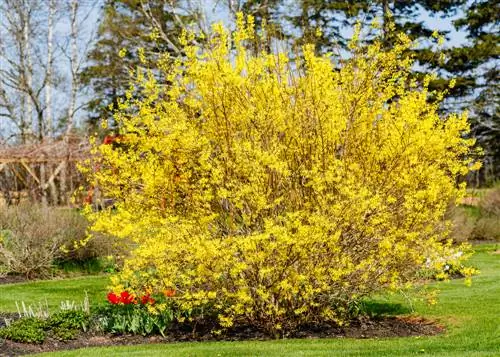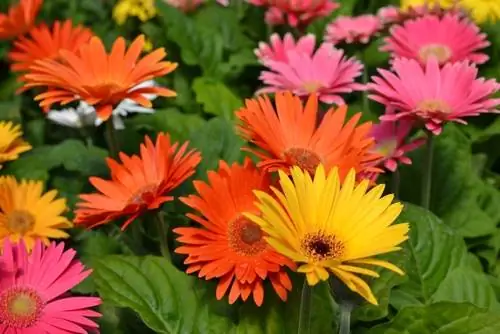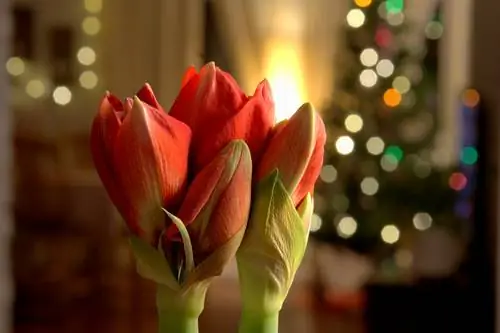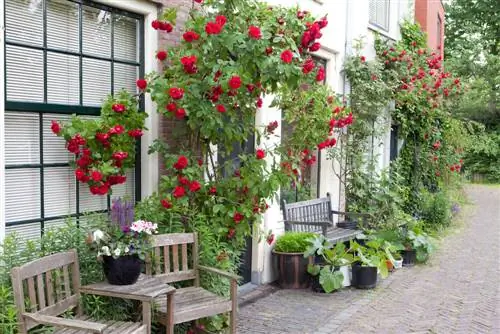- Author admin [email protected].
- Public 2023-12-16 16:46.
- Last modified 2025-01-23 11:21.
In September, dahlias set off a floral firework display. No other plant genus can boast such a we alth of shapes and colors as this magnificent perennial. You can choose from almost 15,000 cultivars for your own garden. In the following article we would like to introduce you to this extremely attractive plant in more detail and give you valuable care tips.

Which flower is particularly beautiful in September?
The dahlia is the flower of the month of September and impresses with its variety of shapes and colors. It grows upright, reaches a height of 30 to 180 centimeters and blooms from July to the first frost in almost all colors except black and dark blue.
Plant profile:
- Botanical name: Dahlia spec. (Georgine)
- Order: Asters
- Family: Asteraceae
- Genus: Dahlias
- Growth: Upright
- Height: 30 to 180 centimeters
- Main flowering period: July to first frost
- Leaf: Opposite, egg-shaped serrated, dark green
- Flower: Arranged in a basket shape, appear as a single flower.
- Flower shape: From single-flowered to radial to spherical filled
- Flower color: Apart from black and dark blue, almost all colors, even two or more colors.
Special features:
Thanks to the nutrients stored in the tuber, the dahlia can grow into a large, richly flowering plant within just one gardening year. If you have newly laid out or redesigned your garden, it can transform a bare bed into a sea of flowers by autumn.
Origin
The original home of the dahlia is the Mexican highlands. In 1789, the first dahlia seeds were brought from there to the botanical garden of Madrid. From here the magnificent perennial quickly spread throughout Europe.
Location and care
Due to their warm area of origin, dahlias can only be cultivated outdoors in our latitudes from the end of April to the end of November. You then have to dig up the tubers and overwinter in a frost-free room.
Floor
Dahlias prefer a spot in full sun. The substrate should be rich in humus and nutrients, and the soil should not be too dry.
Watering and fertilizing
Dahlias love it moist, but not too wet. Therefore, water regularly and carefully. From May to June, the perennials are fertilized every 14 days with some fully ripe compost (€12.00 on Amazon), to which you add some horn shavings. Alternatively, you can use liquid, organic fertilizer.
Diseases and pests
He althy dahlias are very resistant to disease. If waterlogging occurs, the magnificent perennials tend to develop tuber rot.
Unfortunately, dahlias are very popular with snails. Therefore, surround the perennials with a snail fence and/or collect the reptiles in the early morning hours.
Overwintering dahlias
Cut the perennials back to ten centimeters before the first frost and dig up the tubers. Shake off any damp soil and let the tubers dry upside down until there is no more moisture in the stem.
You can now either bury them in a wooden box filled with sand or spread them out on the grate in a frost-free room for the winter.
Tip
In spring you can carefully divide the tubers and propagate the magnificent perennial in this way.

